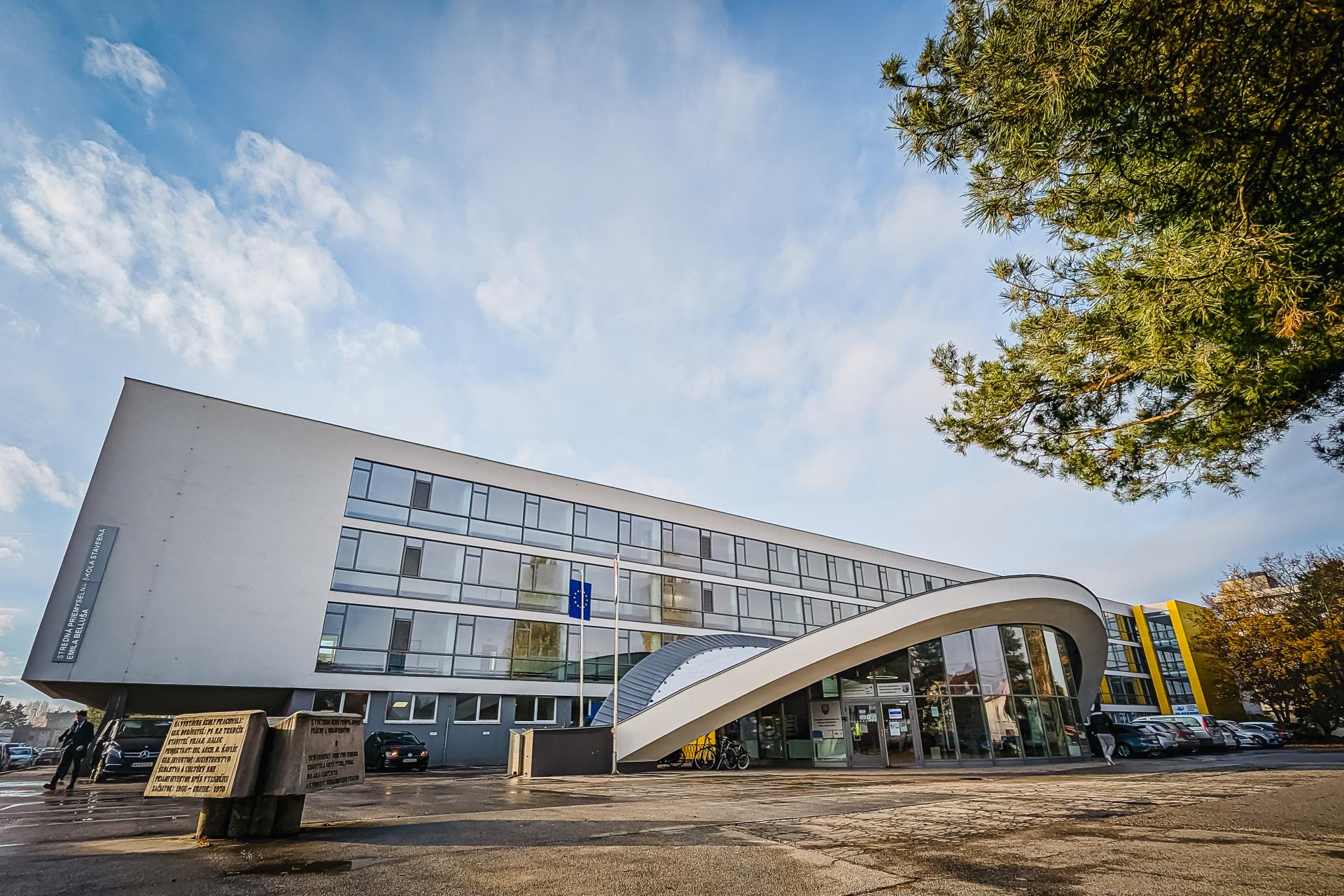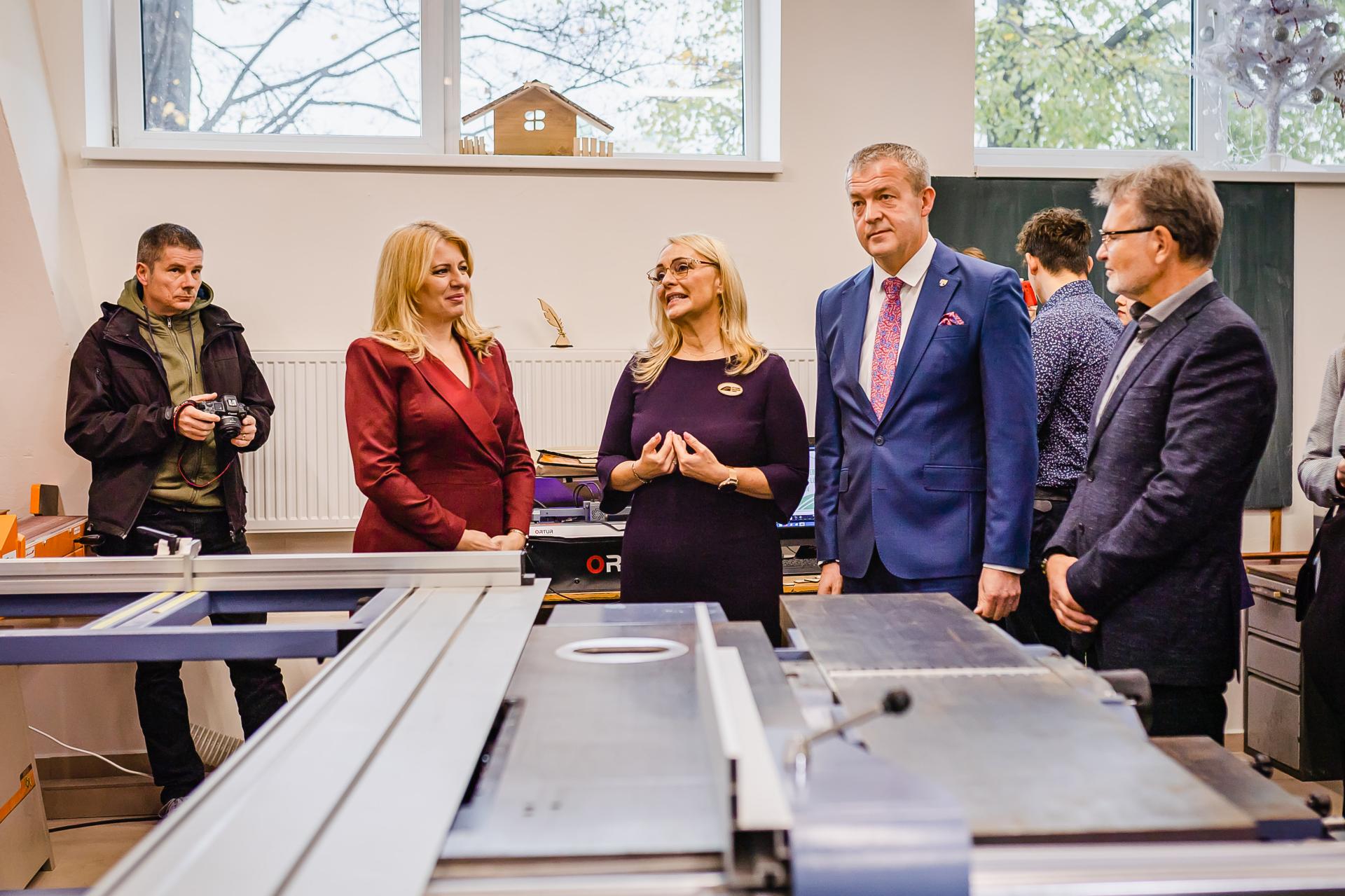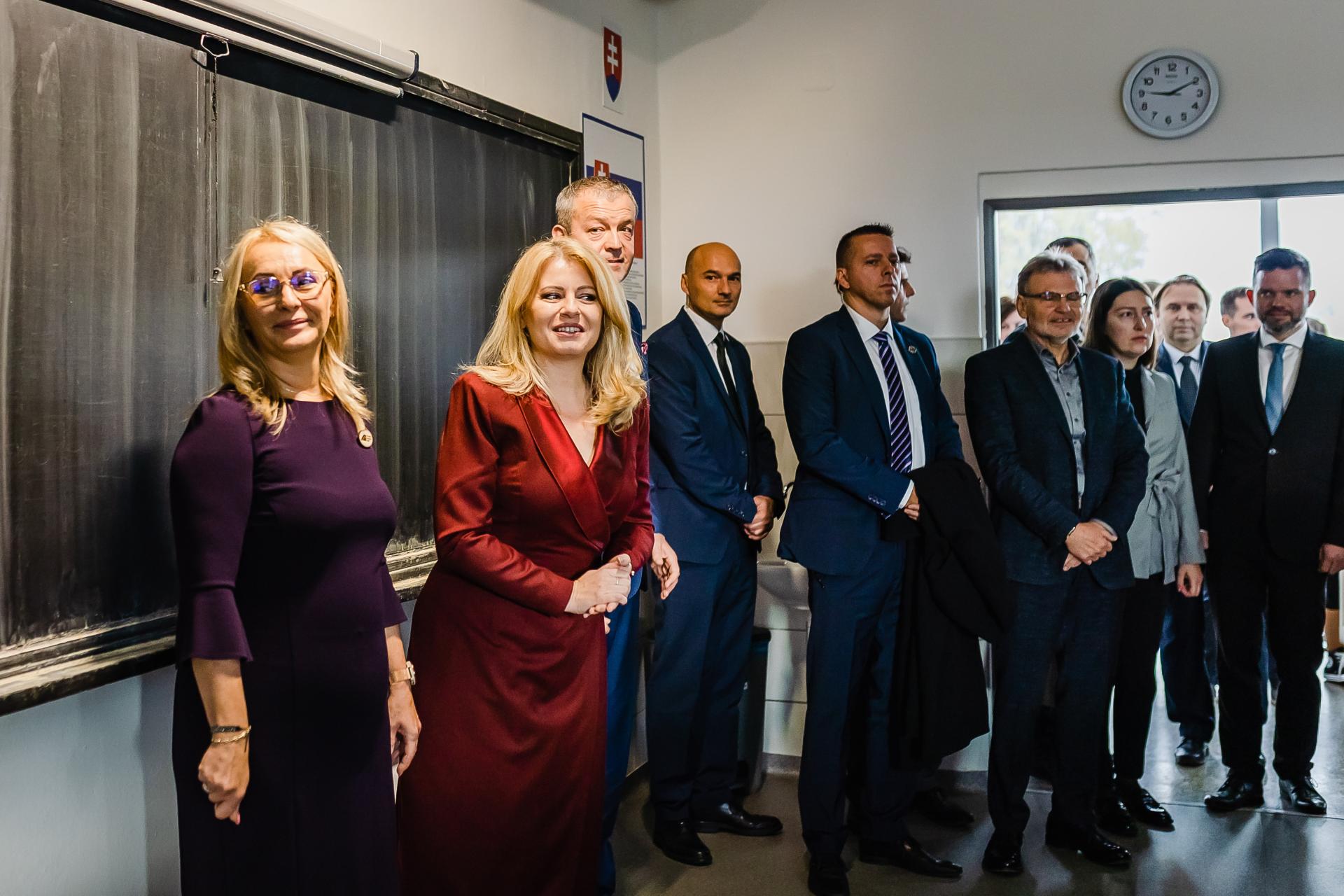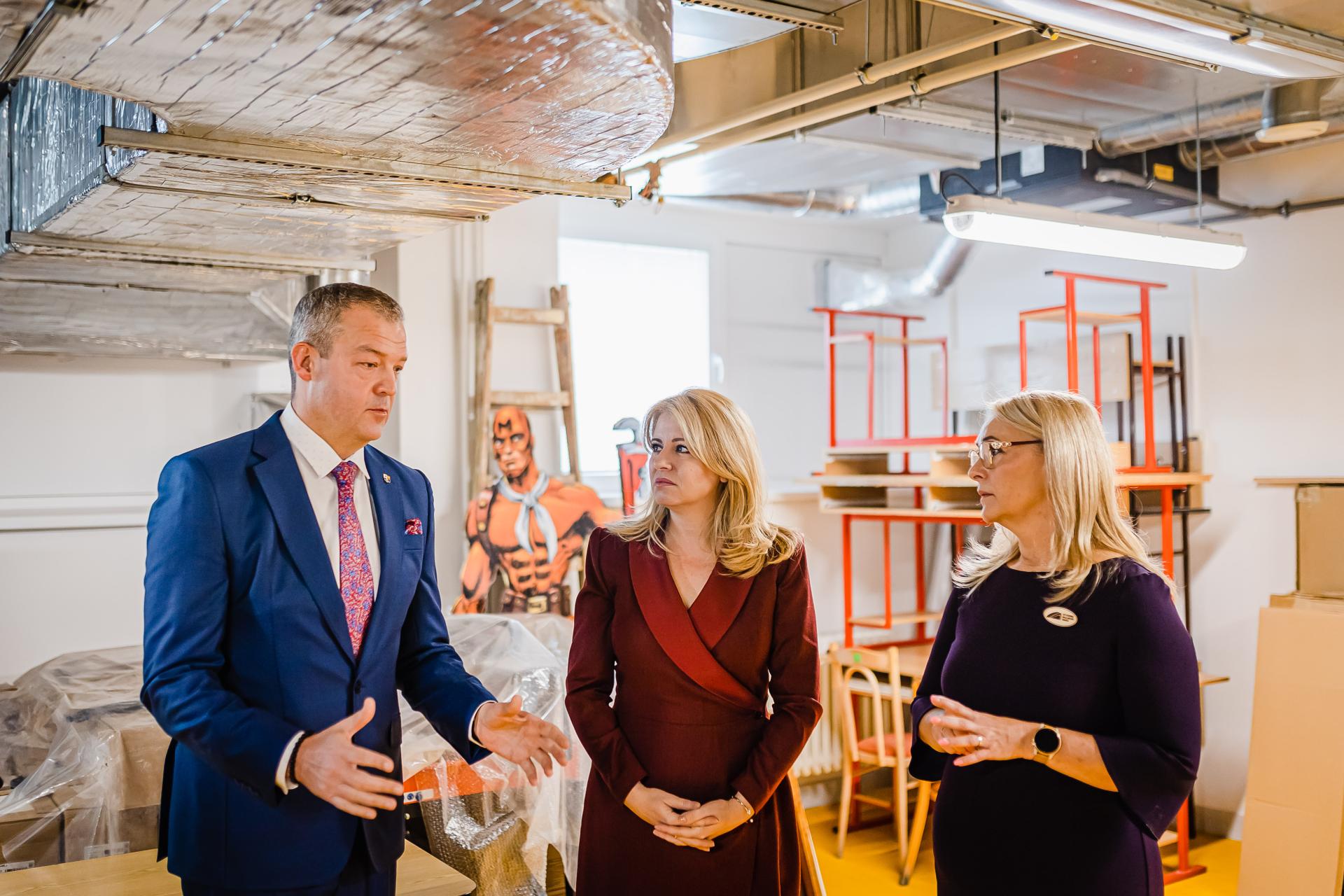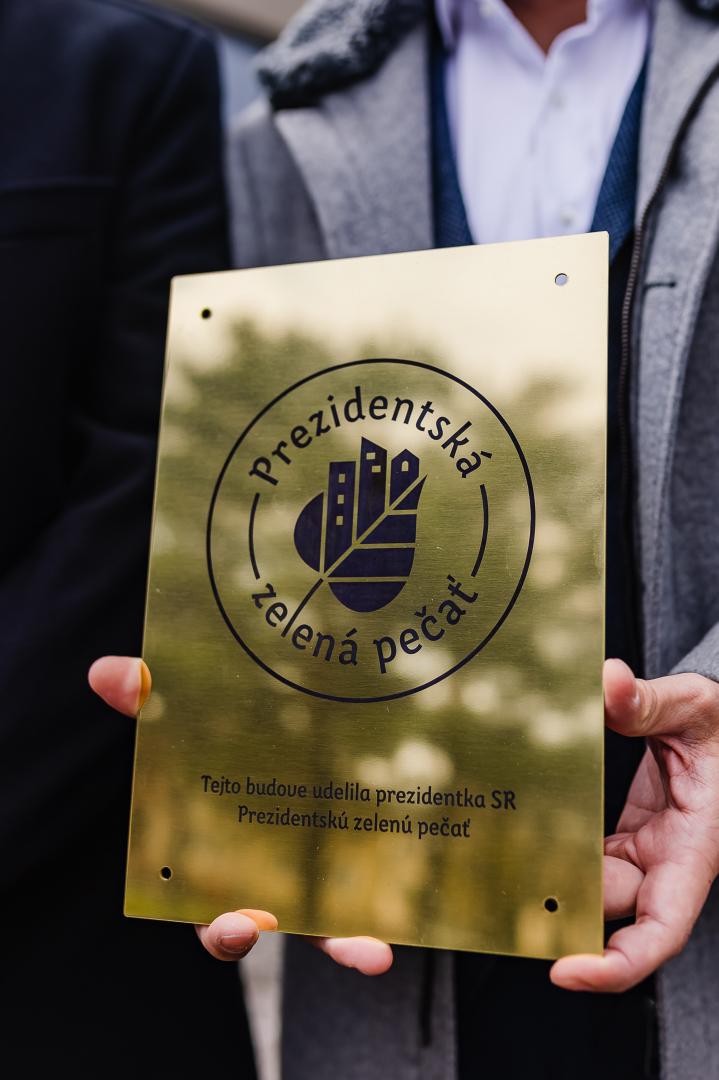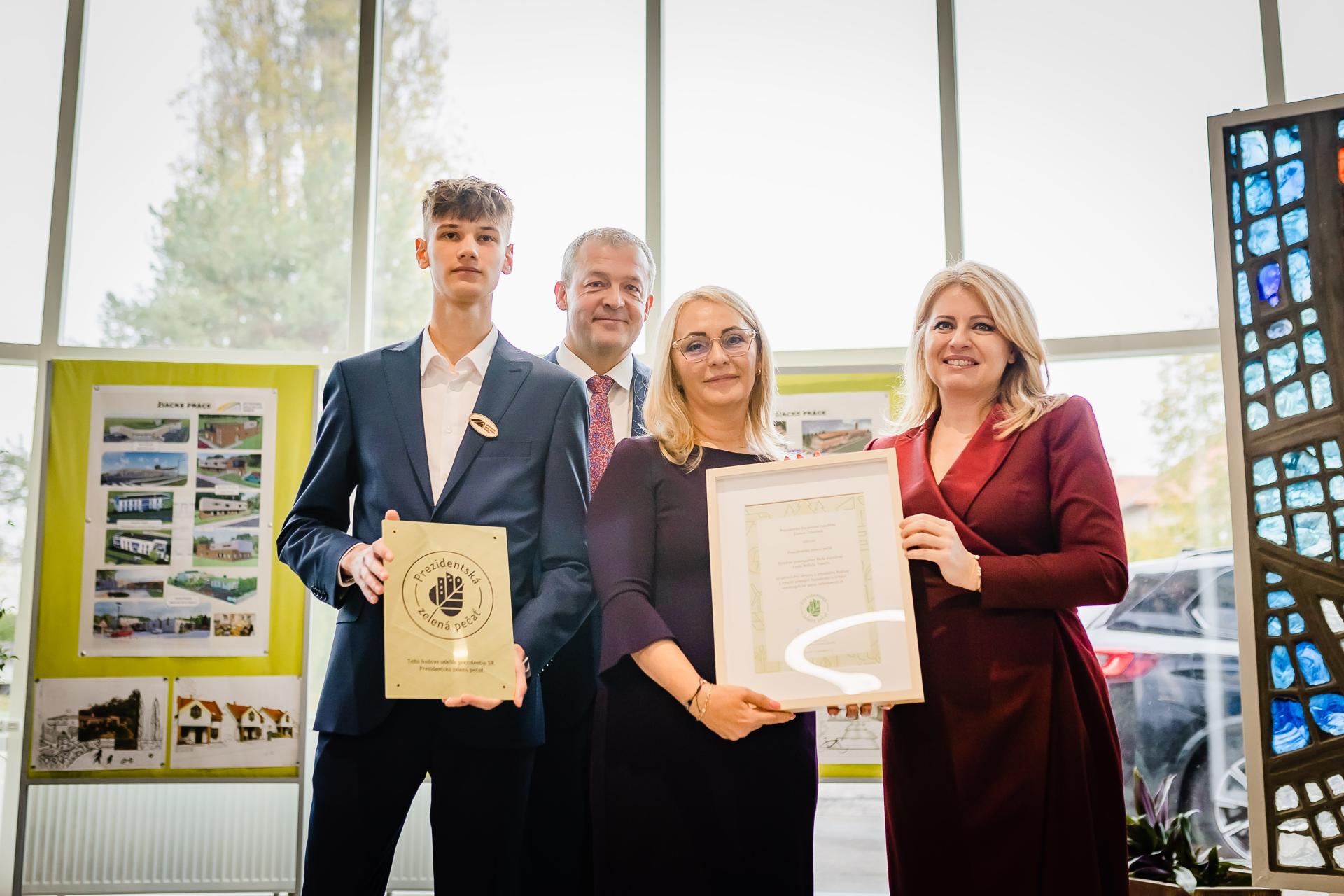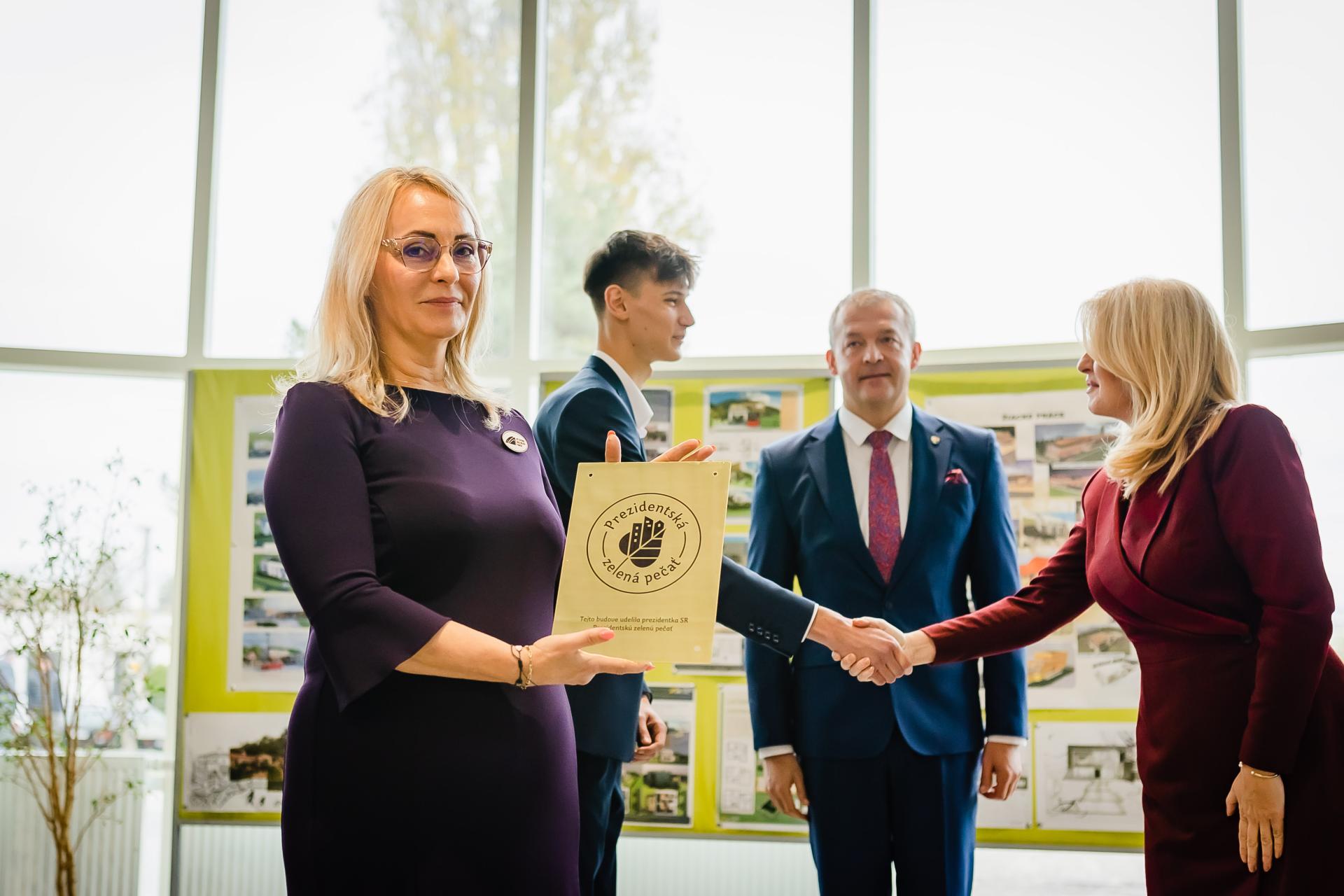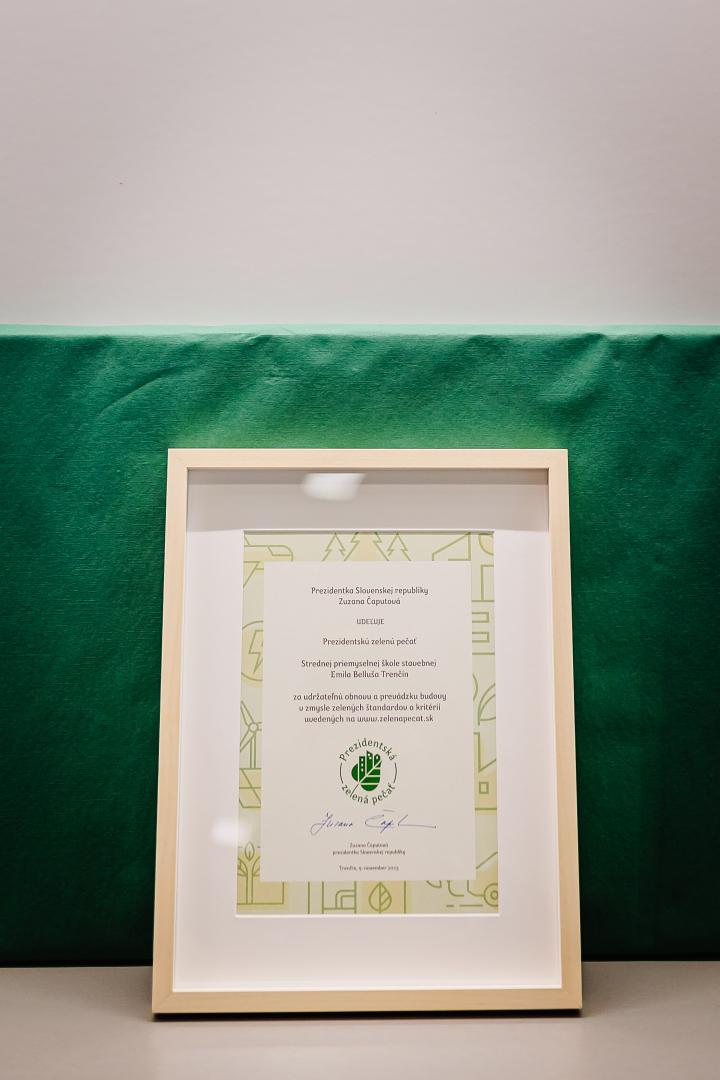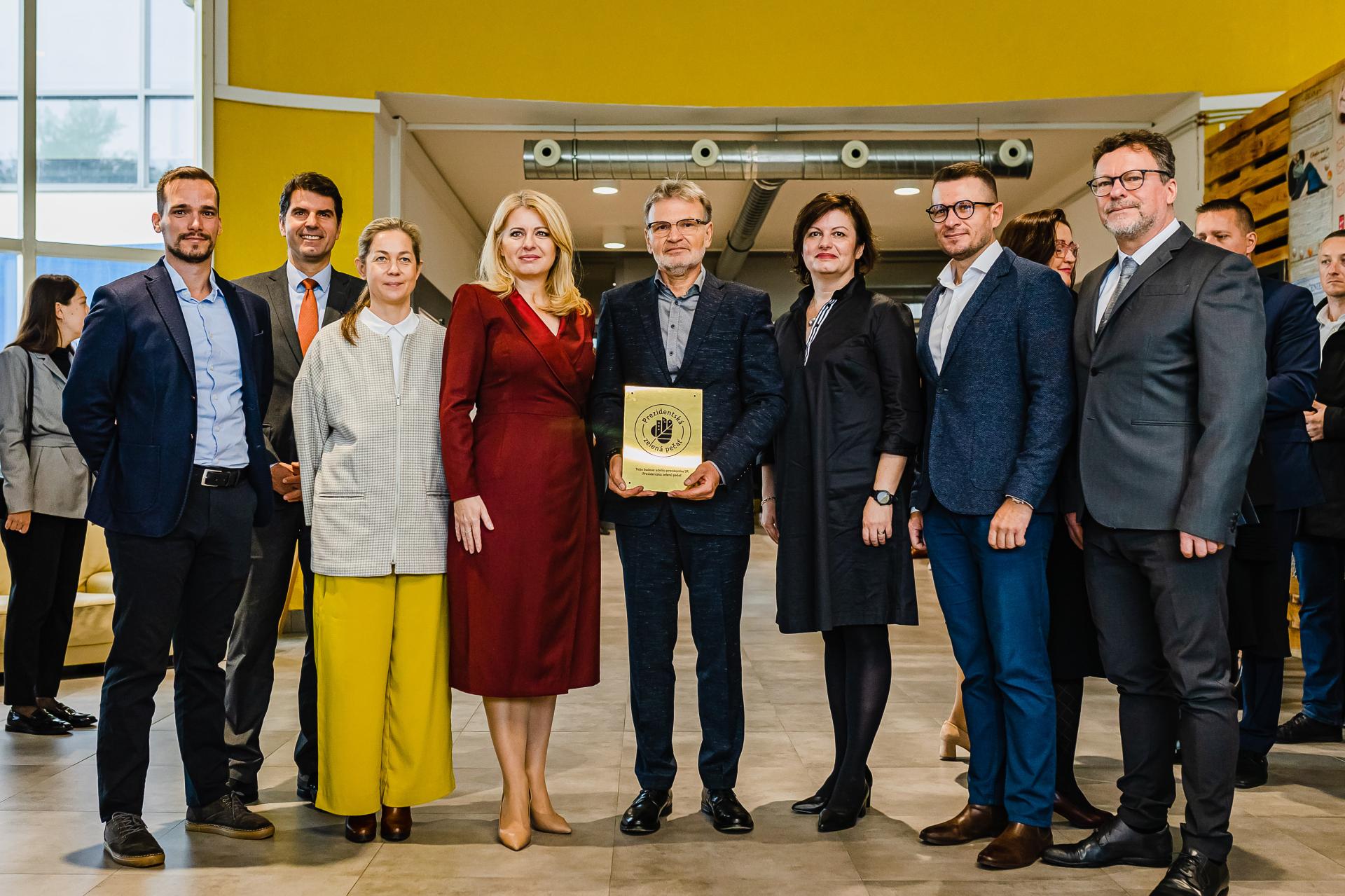Presidential Green Seal (PGS)
Basic information
Project Title
Presidential Green Seal (PGS)
Category
Prioritising the places and people that need it the most
Project Description
Beautiful, sustainable, together. But how to implement these NEB ideas into practice in Slovakia? Well, sometimes it takes a President to bring about a change! And a team of experienced experts. We are proud to present the Presidential Green Seal, a unique, holistic standard for assessing the quality of renovation of public buildings. It stands for: The aesthetic quality, sustainability, climate action, circularity and inclusion. And it comes with an award, handed over by the Slovak President.
Geographical Scope
National
Project Region
Slovakia
Urban or rural issues
It addresses urban-rural linkages
Physical or other transformations
It refers to a physical transformation of the built environment (hard investment)
EU Programme or fund
No
Description of the project
Summary
The main goal of the Presidential Green Seal (PGS) project is to support the sustainable renovation of public buildings throughout Slovakia, where we still do not have a single sustainable certified public building. Buildings renovated according to the rules of the project will contribute to the development of all regions of Slovakia, aligned with the EU's green goals for 2030 and 2050, and also ensure high aesthetic quality of public building and the principles of circularity, social sustainability and inclusion.
In order to achieve the above goals, there was a unique combination of the renowned Slovak experts on sustainability, circularity, architecture and the President of the Slovak Republic, whose personal participation in the project motivates building owners to renovate their buildings according to the project's sustainable rules, going much beyond basic legislative benchmarks. If the building meets the evaluation criteria of the project in ten categories, the President of the Slovak Republic will personally hand over the confirmation - the Presidential Green Seal - to the owner of the building in the presence of the media and great public interest.
The decree placed on the facade of the building informs every visitor that he is in an extraordinary building that has met the highest requirements for sustainability, architecture and will contribute to social sustainability, community development and ensure the prevention of social segregation.
Meanwhile, the first evaluation according to the PGS- criteria was successfully completed and at the award ceremony the Green Seal was personally handed over by the Slovak President Zuzana Čaputová to the Secondary industrial school of constructions of Emil Belluš in Trenčín, region of Western Slovakia. Further expansion of the such renovations and its evaluation based on PGS will follow in further regions of Slovakia. And maybe thanks to its replicability and transferability, also to further countries in Europe.
In order to achieve the above goals, there was a unique combination of the renowned Slovak experts on sustainability, circularity, architecture and the President of the Slovak Republic, whose personal participation in the project motivates building owners to renovate their buildings according to the project's sustainable rules, going much beyond basic legislative benchmarks. If the building meets the evaluation criteria of the project in ten categories, the President of the Slovak Republic will personally hand over the confirmation - the Presidential Green Seal - to the owner of the building in the presence of the media and great public interest.
The decree placed on the facade of the building informs every visitor that he is in an extraordinary building that has met the highest requirements for sustainability, architecture and will contribute to social sustainability, community development and ensure the prevention of social segregation.
Meanwhile, the first evaluation according to the PGS- criteria was successfully completed and at the award ceremony the Green Seal was personally handed over by the Slovak President Zuzana Čaputová to the Secondary industrial school of constructions of Emil Belluš in Trenčín, region of Western Slovakia. Further expansion of the such renovations and its evaluation based on PGS will follow in further regions of Slovakia. And maybe thanks to its replicability and transferability, also to further countries in Europe.
Key objectives for sustainability
The main objective of the Project has two main aspect: The first is to foster sustainable renovation of public buildings in regions around Slovakia, in line with the EU targets. The second is to establish unified, easy to understand criteria for holistic sustainable renovation. These include not only the obvious criteria such as energy efficiency and decarbonisation, but also health and wellbeing, circularity, inclusion, beauty and other NEB criteria.
Three areas with equal relevance are monitored in seven construction categories and three operational (non-construction) categories. Detailed information about these categories can be seen in https://www.zelenapecat.sk/ . In order to achieve the rating, progress must occur in each of them. The weight of individual areas is proportional and covers:
• Construction changes including technical renovation of buildings through insulation, energy efficient sources
• Ecological measures icluding recycling, digitization, banning single-use plastics, planting greenery)
• Community measures that result in a change of user behavior on the institutional level through group transport, public workshops, support campaigns etc.
The project also includes the Green Building Academy educational program, which was prepared by the Slovak Council for Green Buildings and enables the acquisition of general as well as detailed professional knowledge and skills for the construction, renovation and operation of buildings.
Three areas with equal relevance are monitored in seven construction categories and three operational (non-construction) categories. Detailed information about these categories can be seen in https://www.zelenapecat.sk/ . In order to achieve the rating, progress must occur in each of them. The weight of individual areas is proportional and covers:
• Construction changes including technical renovation of buildings through insulation, energy efficient sources
• Ecological measures icluding recycling, digitization, banning single-use plastics, planting greenery)
• Community measures that result in a change of user behavior on the institutional level through group transport, public workshops, support campaigns etc.
The project also includes the Green Building Academy educational program, which was prepared by the Slovak Council for Green Buildings and enables the acquisition of general as well as detailed professional knowledge and skills for the construction, renovation and operation of buildings.
Key objectives for aesthetics and quality
The set of criteria for awarding the Slovak Presidential Green Seal are aligned with the aims of the NEB and include Beauty. Architectural quality of renovations and the overall pleasing aesthetics play a big role in creation of a welcoming, inspiring space. This pertains to the visual and material quality of the building itself, its interior spaces as well as the outdoor areas. For all of these, credits may be awarded. The quality is assessed by qualified practising architects, including the Chair of the Slovak Chamber of Architects.
Key objectives for inclusion
Inclusivity is an important part of the assessment process. The criteria go beyond current legislative requirements valid in Slovakia. The building must be not only accessible to handicapped people with movement or sight limitation, seniors or parents with small kids. It should make them all feel welcome. This does not include only the entrance and interiors of the buildings (including toilets), but also the adjacent public spaces, access routes, a bus stop, car parking, etc.
Results in relation to category
The goal of the category in which the project is entered into the NEB Prizes 2024 competition is physical transformation and regeneration of territories and places and renovation, regeneration of buildings and their surroundings to fight segregation and isolation. In accordance with the goals of this category, the project supports the sustainable renovation of buildings in all regions of Slovakia, including the least developed ones. It also includes the renewal of educational and cultural institutions, as exemplified by the first awarded Presidential Green Seal for the Secondary Industrial Construction School in November 2023 and the Arena Theater, which will be approved at the end of 2023 and will be the second building to receive the project award.
How Citizens benefit
Buildings renovated on the basis of project criteria will have a high degree of sustainability, aesthetics, architectural quality, principles of circularity in operation and, based on this, will provide benefits for building owners as well as for building workers and visitors.
For the owners, they will ensure high energy efficiency, low operating costs and possibilities for strengthening community life. For workers and visitors, the building will provide a healthy indoor environment, accessibility, a high degree of greenery and biophilia in the interior spaces.
The project also has an Inclusion and Education category, where it supports the prevention of social segregation, social sustainability and shared responsibility of residents in the building in the design of the building and its operation. One of the goals of the project is the participation of future residents and visitors in the design of the restoration of the building, where they can contribute with their proposals to the restoration and future operation of the building.
For the owners, they will ensure high energy efficiency, low operating costs and possibilities for strengthening community life. For workers and visitors, the building will provide a healthy indoor environment, accessibility, a high degree of greenery and biophilia in the interior spaces.
The project also has an Inclusion and Education category, where it supports the prevention of social segregation, social sustainability and shared responsibility of residents in the building in the design of the building and its operation. One of the goals of the project is the participation of future residents and visitors in the design of the restoration of the building, where they can contribute with their proposals to the restoration and future operation of the building.
Physical or other transformations
It refers to a physical transformation of the built environment (hard investment)
Innovative character
On one hand, legislation sets the basic requirements for specific targets, such as energy effiiciency and accessibility, but it does not provide a holistic approach to make a good quality building, aligned with the NEB principles. On the other hand, the robust international rating standards such as BREEAM, LEED and WELL are much too expensive and difficult, that is why there is not a single public building with these certificates in Slovakia. We wanted to bridge this gap by bringing in an innovative, simple yet holistic rating standard that is free of charge, easy to administer, yet robust and holistic enough to guarrantee an above average result.
For public buildings however, this kind of approach is rather an exception, despite the fact that public buildings should be a best practice example for a commercial sector.By Presidential Green Seal we focused on these challenges with following solutions. This certification is based on the principles of international certification systems but is easy to implement and free of charge. Furthermore, based on the international core we believe this certification could be applied all over Europe. And that we consider as innovative by itself.
Furthermore, as motivating and at the same time innovative we consider also the fact that the President of Slovak republic Zuzana Čaputová will personally hand over the award to the successful buildings. This will support the awareness of the need to apply sustainable solutions to buildings and the information will naturally reach the general public as well.
For public buildings however, this kind of approach is rather an exception, despite the fact that public buildings should be a best practice example for a commercial sector.By Presidential Green Seal we focused on these challenges with following solutions. This certification is based on the principles of international certification systems but is easy to implement and free of charge. Furthermore, based on the international core we believe this certification could be applied all over Europe. And that we consider as innovative by itself.
Furthermore, as motivating and at the same time innovative we consider also the fact that the President of Slovak republic Zuzana Čaputová will personally hand over the award to the successful buildings. This will support the awareness of the need to apply sustainable solutions to buildings and the information will naturally reach the general public as well.
Disciplines/knowledge reflected
Key areas with equal relevance are monitored in 7 construction and 3 operational (non-construction) categories.
Construction categories include:
Energy efficiency and CO2 reduction evaluates measures to improve the building's own energy efficiency, support the reduction of carbon emissions and effective management during the operational phase of the building's life.
Construction, waste and circularity evaluates the application of circular economy principles in reconstruction and construction following the rule: Refuse – Reuse – Recycle.
Water the sustainable use of water in the operation of the building and its premises.
Materials steps taken to reduce the impact of building materials through design, construction, maintenance and repairs.
Indoor air quality evaluates the increase in comfort, health, mobility and safety of residents, visitors and people in the vicinity. The aim is to improve the quality of life in buildings.
Greenery (and soil) sustainable land use, habitat protection and creation, and long-term biodiversity enhancement for the building and surrounding land.
Aesthetics and architectural quality. Beauty through architecture is a tool for building up a relationship and respect to the environment. Climate change adaptation measures are an integral part of architectural quality.
Operational (non-construction) categories:
The principles of circularity during operation evaluates the building operator's approach to the transition to a circular economy during operation.
Transport evaluates building users' access to sustainable means of transport, public transport accessibility, electromobility and other alternative transport solutions that support the reduction of car travel and thus congestion and CO₂ emissions during the life of the building.
Inclusion and awareness evaluates accessible, attractive and diverse spaces for all users that support multicultural and multigenerational dialogue.
Construction categories include:
Energy efficiency and CO2 reduction evaluates measures to improve the building's own energy efficiency, support the reduction of carbon emissions and effective management during the operational phase of the building's life.
Construction, waste and circularity evaluates the application of circular economy principles in reconstruction and construction following the rule: Refuse – Reuse – Recycle.
Water the sustainable use of water in the operation of the building and its premises.
Materials steps taken to reduce the impact of building materials through design, construction, maintenance and repairs.
Indoor air quality evaluates the increase in comfort, health, mobility and safety of residents, visitors and people in the vicinity. The aim is to improve the quality of life in buildings.
Greenery (and soil) sustainable land use, habitat protection and creation, and long-term biodiversity enhancement for the building and surrounding land.
Aesthetics and architectural quality. Beauty through architecture is a tool for building up a relationship and respect to the environment. Climate change adaptation measures are an integral part of architectural quality.
Operational (non-construction) categories:
The principles of circularity during operation evaluates the building operator's approach to the transition to a circular economy during operation.
Transport evaluates building users' access to sustainable means of transport, public transport accessibility, electromobility and other alternative transport solutions that support the reduction of car travel and thus congestion and CO₂ emissions during the life of the building.
Inclusion and awareness evaluates accessible, attractive and diverse spaces for all users that support multicultural and multigenerational dialogue.
Methodology used
The evaluation system is divided into two parts:
The first seven represent building categories that focus primarily on technical or technological requirements of the building (eg. energy consumption, use of sustainable building materials, rainwater management, architecture, etc.).
The remaining three represent Operational (non-construction) categories, which focus on the operation of the institution/building and the impact on the community (waste sorting, digitization of processes, support of non-automotive transport, green procurement etc.)
Individual categories are subsequently divided into more specific parameters and criteria. The system is composed of mandatory criteria (only in construction categories) and optional criteria. For fulfilling the mandatory criteria, the applicant automatically receives 20 points. For fulfilling the selected optional criteria, the applicant receives the appropriate number of points according to the published table. At the same time, the applicant within each category can receive a bonus of 2 points for their own innovative solution that will benefit the given category.
The result is evaluated by a simple sum of points, in which the applicant must obtain at least 70 points for construction categories and at least 15 points for non-construction. The goal of the rating system is to allow appropriate flexibility for buildings that could be limited in certain parameters for technical or other reasons. It is therefore up to the choice and possibilities of the applicant in which parameters to choose more ambitious solutions and in which not. The quality and sustainability of the building is ensured by the fulfillment of all three requirements for obtaining PGS.
The first seven represent building categories that focus primarily on technical or technological requirements of the building (eg. energy consumption, use of sustainable building materials, rainwater management, architecture, etc.).
The remaining three represent Operational (non-construction) categories, which focus on the operation of the institution/building and the impact on the community (waste sorting, digitization of processes, support of non-automotive transport, green procurement etc.)
Individual categories are subsequently divided into more specific parameters and criteria. The system is composed of mandatory criteria (only in construction categories) and optional criteria. For fulfilling the mandatory criteria, the applicant automatically receives 20 points. For fulfilling the selected optional criteria, the applicant receives the appropriate number of points according to the published table. At the same time, the applicant within each category can receive a bonus of 2 points for their own innovative solution that will benefit the given category.
The result is evaluated by a simple sum of points, in which the applicant must obtain at least 70 points for construction categories and at least 15 points for non-construction. The goal of the rating system is to allow appropriate flexibility for buildings that could be limited in certain parameters for technical or other reasons. It is therefore up to the choice and possibilities of the applicant in which parameters to choose more ambitious solutions and in which not. The quality and sustainability of the building is ensured by the fulfillment of all three requirements for obtaining PGS.
How stakeholders are engaged
The implementation of the project was led by the Slovak Council for Green Buildings, however the expert project team included also representatives of important organizations in the field of sustainability. It was the Institute of Circular Economy (INCIEN), Buildings for the Future (BPB), Manifest 2020 (Slovak NEB partner), Slovak Innovation and Energy Agency (SIEA) and Slovak Chamber of Architects (SKA).
For communication with cities and regions, the team included representatives of the two largest organizations that represent municipalities and cities - the Association of Cities and Towns of Slovakia (ZMOS) and the Union of Cities of Slovakia (UMS). This structure of the project team ensures expertise and also direct contact with all regions in Slovakia.
A unique element of the project is the personal participation of the President of the Slovak Republic, who ensures contact and support of the state administration.
For communication with cities and regions, the team included representatives of the two largest organizations that represent municipalities and cities - the Association of Cities and Towns of Slovakia (ZMOS) and the Union of Cities of Slovakia (UMS). This structure of the project team ensures expertise and also direct contact with all regions in Slovakia.
A unique element of the project is the personal participation of the President of the Slovak Republic, who ensures contact and support of the state administration.
Global challenges
Slovakia as an EU member state is signatory to the EU Green Deal and has largely aligned its decarbonisation ambitions with those of the EU, namely reduction of emissions by 55% until 2030 and achievement of carbon neutrality by 2050. These are very ambitious plans that require incentives and tools to meet the targets. President of Slovak republic Zuzana Caputova and her office perceive this gap and that was the impulse to set up the PGS award, prepared by a team of experienced specialists, architects, civil engineers and professionals from other resorts. The effort paid off and the first public building renovation projects are being certified.
Learning transferred to other parties
The method of evaluating public buildings using the Presidential Green Seal is based on international standards. The categories and parameters cover all important areas of sustainability in the construction, renovation and operation of buildings. In addition, there are categories for aesthetics and architectural quality and for inclusion and education aligned with NEB-principles.
Therefore, the project is generally applicable for all types of buildings and for all areas and regions of Slovakia. In addition, the president's personal participation in the project shows the importance of the sustainable renovation of buildings for the state administration.
Furthemore, without any significant changes, the project is even applicable to any EU country where it would be necessary to support the sustainable renovation of public buildings.
Therefore, the project is generally applicable for all types of buildings and for all areas and regions of Slovakia. In addition, the president's personal participation in the project shows the importance of the sustainable renovation of buildings for the state administration.
Furthemore, without any significant changes, the project is even applicable to any EU country where it would be necessary to support the sustainable renovation of public buildings.
Keywords
sustainable public building renovation
regional development
evaluation system
subject-specific education
motivation to action

